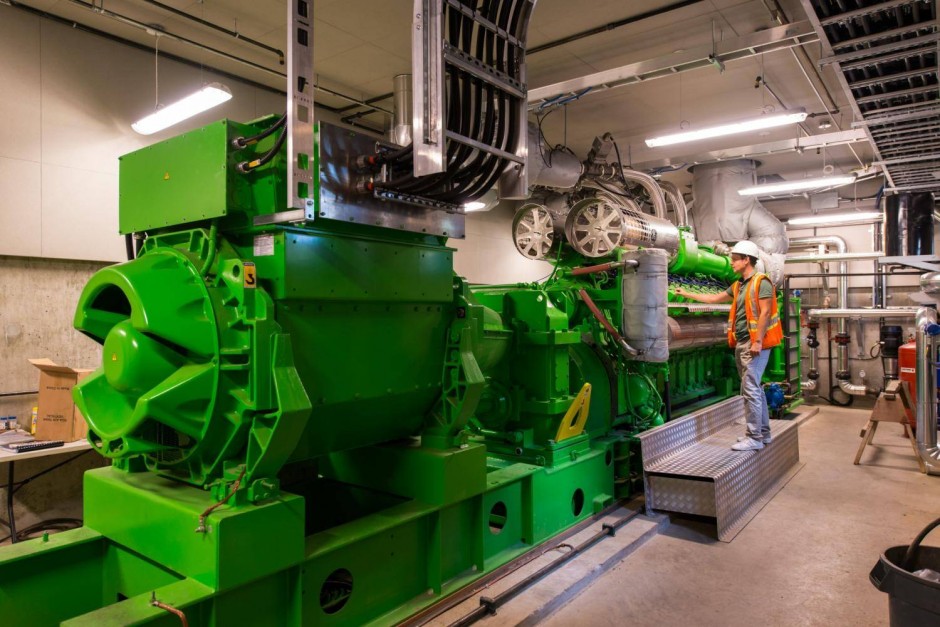
Presently running on renewable natural gas, this engine produces both electricity for the campus grid and steam and hot water for UBC’s Academic District Energy System.
Renewable Natural Gas (RNG)
The UBC Bioenergy Research Demonstration Facility’s (BRDF) cogeneration engine has undergone a transformational dual-fuel upgrade. The engine is now capable of using a renewable natural gas (RNG) and natural gas (NG) combination, in addition to syngas (mainly hydrogen and carbon monoxide).
The engine was originally designed to run off syngas produced from gasified biomass (waste wood products), to produce green electricity and thermal energy. RNG, or biogas, on the other hand, is methane produced from landfill or bio digester sources and is a common green fuel source.
BRDF operators currently use all the syngas produced by the gasifier to fuel the thermal energy production process—then they use an RNG/NG mix to fuel the cogeneration engine.
Dual Fuel Upgrade Benefits
- The dual fuel upgrade maximizes the BRDF engine’s electrical and thermal energy production capacity
- While we can produce green electrical energy as originally envisioned by using RNG, we can also increase the thermal energy production beyond our initial plans by adding NG use to the BRDF engine
- As a result, we’re increasing overall energy production by 75 per cent beyond the original BRDF design concept
Offsetting Costs and Generating Savings
RNG is typically more expensive than NG. However, the additional fuel costs are being offset by the BRDF’s electrical production revenues. We’re working actively with FortisBC to reduce UBC’s RNG pricing. As RNG pricing decreases, we intend to increase RNG consumption and reduce NG use, to meet the BRDF engine’s thermal production needs.
The BRDF is a key component of UBC’s greenhouse gas (GHG) emissions reduction efforts. By using 100 per cent RNG for the BRDF engine, we could reduce our campus GHG emissions by an additional five per cent, compared to the facility’s original reduction targets, and help UBC meet its overall goal of reducing GHG emissions by 33 per cent by 2015, compared to 2007 levels.